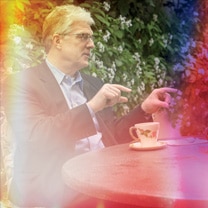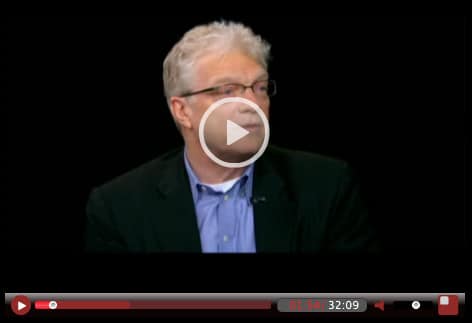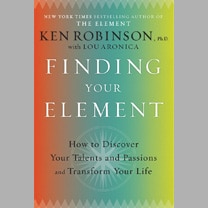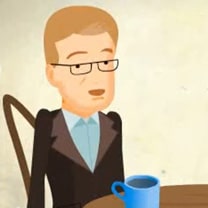Sir Ken Robinson speaks to Paddy O'Connell
When we launched in Finding Your Element in the UK, I went to BBC Radio 2 in London for an interview and call-in with Paddy O Connell. This is how it went:
Every Child Is An Artist
"What do Disney television honcho Anne Sweeney and internationally renowned education theorist Sir Ken Robinson have in common? Ideas for unlocking creativity in both children and adults."
Click here to read full article / By Chuck Salter / Creative Conversations / Fast Company
Charlie Rose Interview
I really enjoyed this interview with Charlie Rose hope you will too...
Click here to view on Bloomberg.com
Finding Your Element
Are you in your Element? Do you love your life or the work you do? Sadly many people don’t have any great sense of purpose or fulfillment. They put up with what they do and wait for the weekend.
The Element is where your natural aptitudes meet your personal passions. It could be playing the guitar, basketball, cooking, or teaching, working with technology or with animals – anything for which you have a natural feel. An essential step in finding your Element is to understand your own aptitudes. But being in your Element is more than doing things you’re good at. Many people are good at things they don’t really care for: to be in your Element you have to love it too. The Element is different for everyone. Whatever it may be for you, as Confucius said, “Choose a job you love, and you’ll never have to work a day in your life.”
People often ask me how they can find their Element, or help others to find theirs. They ask other questions too, for example:
- What if I have no special talents?
- What if I have no real passions?
- What if I love something I’m not good at?
- What if I’m good at something I don’t love?
- What if I can’t make a living from my Element?
- What if I have too many other responsibilities and things to do?
- What if I’m too young?
- What if I’m too old?
- Do we only have one Element?
- Is it the same throughout our lives, or does it change?
- How will I know when I’ve found it?
- What do I do to help my children find their Element?
My new book Finding Your Element is a wholehearted attempt to answer these questions. It includes basic ideas and principles, practical exercises, a range of tools and techniques and links to other resources. It also has stories from people in all walks of life about how they found their own Element, about what it took to do that, and the difference it has made to them. My reason for telling these stories of other people’s paths is to help you plan yours. I want to inspire you with real examples of how finding your Element can transform your life. I also want to illustrate the obstacles that most people experience along the way, which are an inevitable part of real life.
In medieval Europe, knights undertook quests to accomplish a goal that they valued. Quests involve journeys, adventures and risks. The quest for your Element is a two-way journey: an inward journey to explore the world within you and an outward journey to explore the world around you. Whether you fulfill your quest depends on how much you value the prize and whether you’re prepared to do what it takes to achieve it. You may be:
- Frustrated that you don’t know what your real talents and passions are
- At school, wondering which courses to take and why
- Trying to decide whether to go to college or to do something else instead
- In a job you don’t like and wondering where to turn
- In midlife or later and feeling the need for a new direction
- Unemployed and wondering where to turn
- Retired and trying to work out what to do now.
In the end, only you will know if you’ve arrived or if you need to push on to the next horizon. Whichever it proves to be, you should never doubt that this is a quest worth taking. My aim in Finding Your Element is to guide and support you along the way. You’ll find the details here.
The Dynamics of Creativity
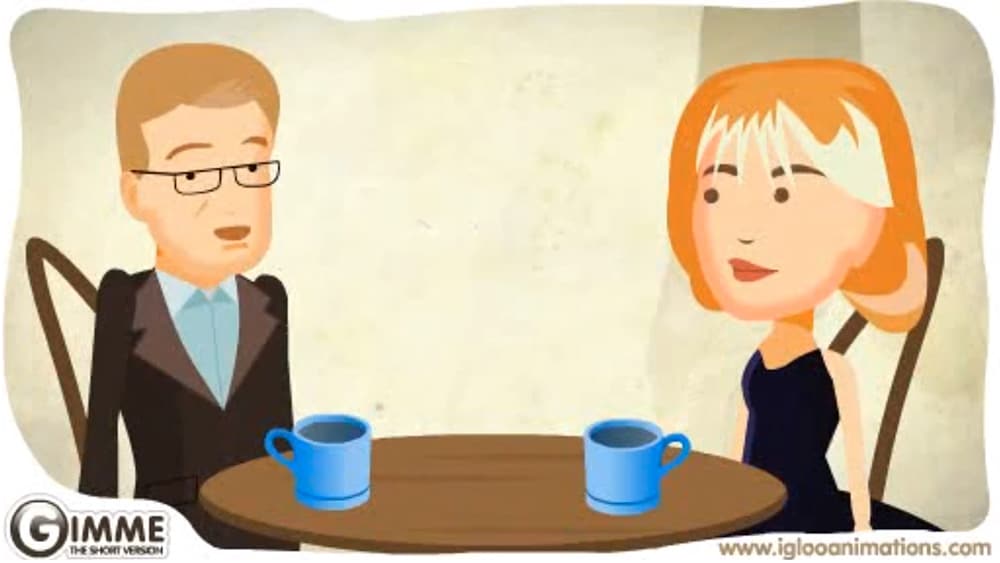 Do you know, there’s an app that turns your iPhone into a harmonica? When the iPhone was launched in July 2008, there were about 800 apps. Five years later, there are over 775,000. Some of these apps have launched whole new businesses. Most of them weren’t anticipated by Apple when they designed the iPhone. They couldn’t have been.
Do you know, there’s an app that turns your iPhone into a harmonica? When the iPhone was launched in July 2008, there were about 800 apps. Five years later, there are over 775,000. Some of these apps have launched whole new businesses. Most of them weren’t anticipated by Apple when they designed the iPhone. They couldn’t have been.
When they set about creating a game-changing smart phone, I’m sure Steve Jobs didn’t say to Jonathan Ives and the design team, “Obviously, this new phone has got to handle phone calls and email. But don’t forget, it’s absolutely vital that it doubles as a blues harmonica. People can get depressed in meetings and they’ll almost certainly want to channel Howlin’ Wolf in the coffee breaks.”
The power of a really original idea like the smart phone is that it generates a storm of related innovations by other people, who become inspired by its possibilities. Like the harmonica app, this process can lead in all kinds of directions that the original creators didn’t have in mind. When Gutenberg invented the printing press in the fifteenth century, he couldn’t have foreseen the Protestant Reformation that it helped to bring about less than a hundred years later. Or Amazon. How could he? When John Logie Baird transmitted the first television picture in 1925, he didn’t foresee Fox News - which is probably just as well.
Individual creativity is almost always affected by the work of other people. In this sense, our own creative work is part of a much larger cultural conversation. When we work in teams or partnerships, the dynamics of creativity may seem obvious. But even people who typically work alone – some writers, composers and mathematicians, for example – are influenced, positively or negatively, by the work of others. Sometimes we’re inspired by people working in the same field, sometimes in other fields entirely.
One of the people I interview in my new book, Finding Your Element, is the film composer, Hans Zimmer. Hans started playing piano at a very young age and he started composing nearly as soon. He was inspired not only by the legendary classical composers, but also by the great architects.
“I have a really good instinct for patterns and shapes and architecture,” he told me. “The things I write about and find inspiring, are the work of architects like Norman Foster and Frank Gehry. I love looking at their buildings and seeing how they’ve put things together. And very often, when I look at my pieces of music — not in musical notation, but in the computer — I look at the shape, and when the shape and the patterns look right, they usually sound right … It’s a funny thing, because people will say, ‘Who were the composers that influenced you?’ and I can point at all of them. But I can also point at many architects. They haven’t influenced me but they have inspired me. At the end of the day, what you really want is the guy who inspires you, not the guy who influenced you.”
The dynamics of creativity can flow across every boundary of discipline, time and culture. These dynamics have profound implications for all organizations, including schools, that want to promote creativity and innovation. In future posts, I’ll look at more at these implications for education and the world of work.
As an appetizer, let me share three examples of creativity that, I’m delighted to say, have been stimulated by some of my own work. I didn’t commission any of these and knew nothing about them until they were sent to me recently.
The first is a wonderful animation by Igloo Animations of the story of Gillian Lynne that I told in my TED Talk in 2006. The second is a fantastic live performance of music and movement by RCC Drumline based on the same talk. The third is a powerful collage of images and video clips stimulated by a talk I gave in London on The Power of Imagination.
Each of these pieces shows how creative ideas constantly feed off each other, and how different media take them in completely different directions. It’s because of this constant cross pollination of ideas between people and disciplines that so many space scientists were inspired by Star Trek, that electricity facilitated rock and roll and that you can now play the blues on your cell phone.

